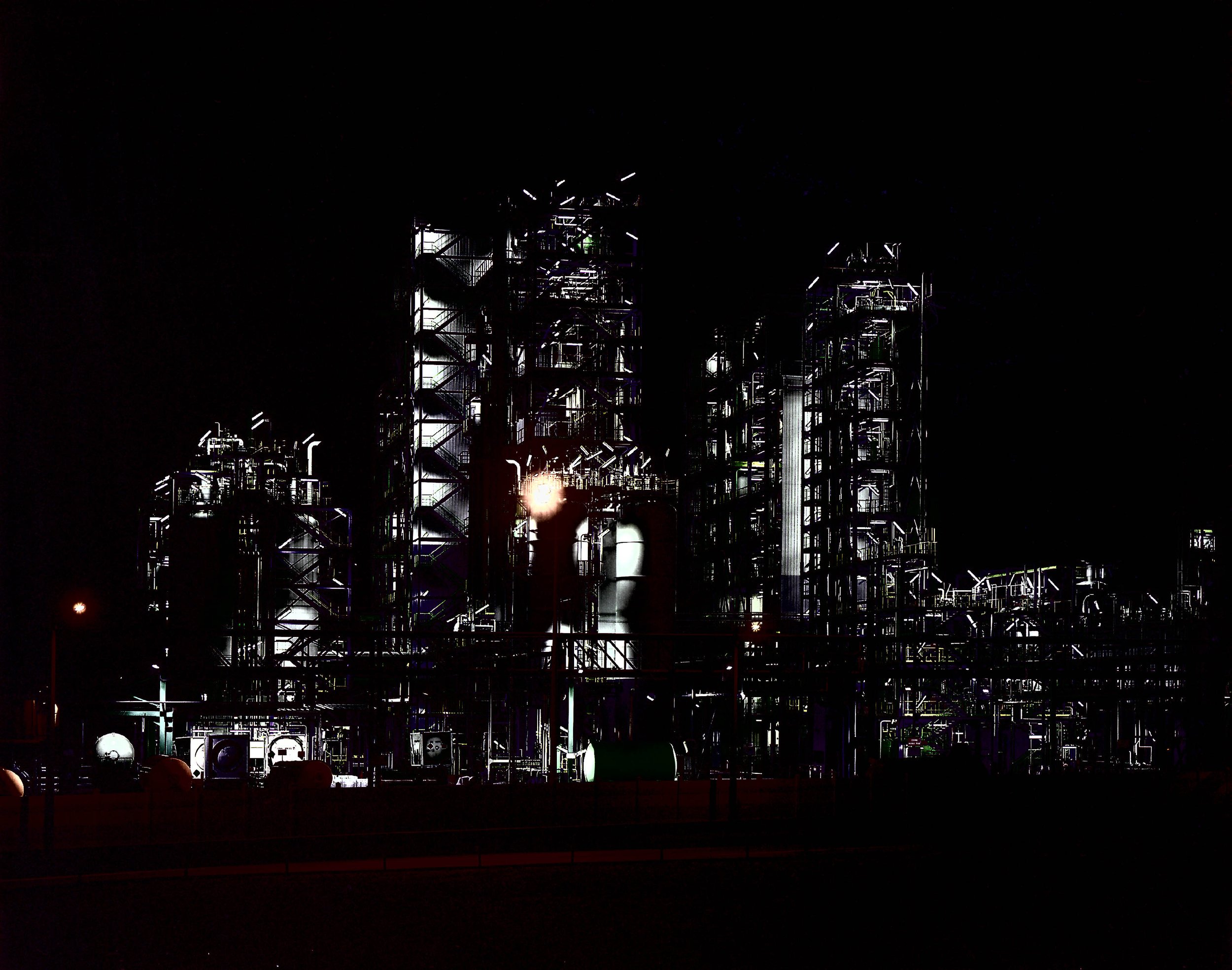
Roof A Gallery - HERE+NOW - Rotterdam, the Netherlands - 2022
SOLO
LEARNING TO SEE POSSIBLE CITIES
After a few seconds it happens. The moment you feel questions arising while looking at a work by Frank van der Salm, it is too late. Your eye is stuck, searching for a hidden trace, that tells you what is wrong here. Your thoughts rustle through an archive of images to decipher by comparison what is happening before your eyes.
Each image by this artist works like a trap, concealed in a seemingly recognizable, understandable image. You could also call it the access to what the artist makes possible. The revelation of the move he makes on the playing field of images that is in and around us, as residents of the cities of the world. This is work that shakes us awake: we do not look so well at the environment where we live or visit. Van der Salm shows powerful and impressive images. Often, but not always, because of their size, and especially because of their frontal and challenging visual style. Sometimes Van Der Salm's works throw you off track. That is the game this work plays with you. Not a casual game, but rather a surprising detour to see the world differently.
Take Matter, a cityscape at night, as large as a wall-to-wall carpet. On the one hand it is a Wow image, on the other hand a commonplace: everyone recognizes the impulse to pull out their smartphone and capture the breathtaking view from this panoramic point of the city lights. But what do you photograph then? Perhaps not at all what you think you are photographing. Come closer, look carefully. Take your time. The peaceful beauty in the distance falls away, fragmented into planes with stuttering pixels, there are no buildings, there is no city anymore, no distance, only a ragged electronic game of spots.
Frank has done what we would all do at the lookout point in Seoul, and now holds up a kind of mirror to us. What do we see? We look at the technical limitations of our phone's camera. And at our relationship to these kinds of media images. How did it get to this point? Are we stupid, easily satisfied, easily deceived? No, we react in accordance with our lives in urban environments, where concrete, glass, asphalt, traffic are just as powerful as the images that this world produces about itself in order to continue to exist and grow. Just look, they are in our brains. Where do these images come from? Aren't they advertising images for a world that we actually don't want? How do we recognize images that are authentic in what they reveal? How do we learn to perceive more freely?
A terrifying bird's-eye view of Tokyo is entitled Sky. While the image seems to exclude the existence of streets, squares or any other form of public space. You look and imagine yourself down there, where you feel the gigantic density of concrete and the mass of people pressing down on you and you automatically seek out the sky with your eyes and perhaps even with your heart.
The way in which this artist provokes the search for a freer perception is implicit and poetic, but overwhelming. Take images such as Aperture, where a night-time parking garage reveals its absurdist techno-peepshow qualities, or Corridor, which makes an underground traffic space appear as a terrifying cave from a mythical story. This work always captures the urban world as a setting where the images and events that we do not see are the actual causes and forces that determine what we do see. Only we have to imagine them ourselves, after we have recovered from the discomfort that the images cause. Van der Salm puts you, the viewer, on the spot to do that.
Mission Interlude must have been made from a dizzying height, but is itself small in size. That gives the baroque floor plan and architectural style of the irresistible luxury real estate projects in Dubai something like jewelry that you win at a fair. You are sucked into Dubai, but with the gaze of an alien.
How can you see this? To tune into the wavelength of Frank van der Salm's work, it is good to see each image as a performance: an actor enters with great charisma, who dominates the space with a few steps, a single sentence, a gesture and a glance and changes the situation. Suddenly something is present that no one had taken into account. It startles us and awakens our imagination. We are going to see what the intervention makes possible. What does the mysterious work Levante do, for example, the view from the sea of the white tourist flats on the Spanish south coast? Why is it as if a layer of chalk has been applied to the image? Does it look like a postcard that can travel in time? Is it a memory or a sign of the fear of forgetting?
It is not a photo of Levante, but of a possible way of looking.
(original text in Dutch by Dirk van Weelden)










